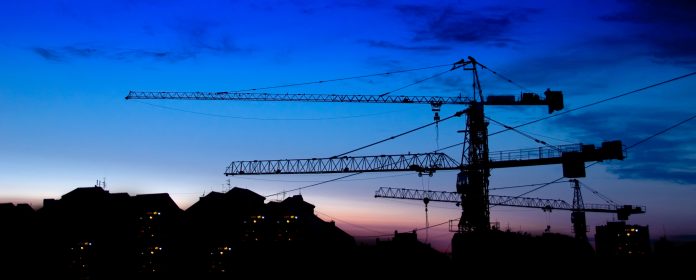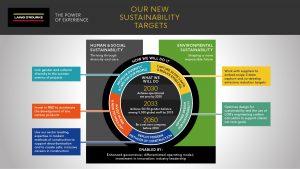Laing O’Rourke has announced new global sustainability targets, including a commitment to decarbonise its own operations by 2030 and achieve equal numbers of men and women among its 5,500 global staff
The decarbonisation target, which will also see Laing O’Rourke develop a plan to tackle Scope 3 emissions before 2050, is aligned with the latest climate science and the most aspirational goal of The Paris Agreement – to limit global warming to 1.5 degrees celsius.
The company will deliver an absolute reduction in carbon emissions from its directly controlled operations (Scope 1 & 2 emissions) of at least 75% by 2030 – a reduction in total emissions even as the business grows.
The remainder, a maximum of 25%, will be achieved through carbon removal activities or offsetting.
To achieve a 75% reduction in absolute carbon emissions, teams are developing plans to further improve energy efficiency and to transition to biofuels as a stepping-stone to the full electrification of operations (including car fleet and plant).
Laing O’Rourke’s sustainability plan is dynamic and will evolve in response to advances in technology.
Three projects are already being progressed:
- Converting all company offices and project sites to renewable energy tariffs
- Transitioning to an all-electric company car fleet
- Investing in commercial solar panels to power all operations at the Laing O’Rourke Centre of Excellence for Modern Construction in Nottinghamshire.
Investing in diversity
Setting an ambitious new target for gender balance is a significant step in the process to deliver overdue change in a sector that continues to lack diversity. Becoming more diverse and inclusive is a key strand of the business’ mission to be the recognised leader for innovation and excellence.
Laing O’Rourke has therefore set a new target to ensure the number of men and women employed in its international staff (currently 5,500 people) are equal by 2033, with additional gender-focused initiatives to be set out to improve representation among frontline construction workers.
It will also apply the learnings from the successful pilot of a Gender Diversity Action Plan in Australia, and the STEM+ schools programme that is now being delivered on construction projects in both operating hubs.
Other mechanisms proven to increase female participation in the business include specific recruitment strategies targeting women, a referral bonus scheme, sponsorship of emerging female leaders and mandatory inclusivity training for senior and hiring managers.
By implementing these measures, the company now has 36% more women in senior project roles in Australia than 12 months ago.















